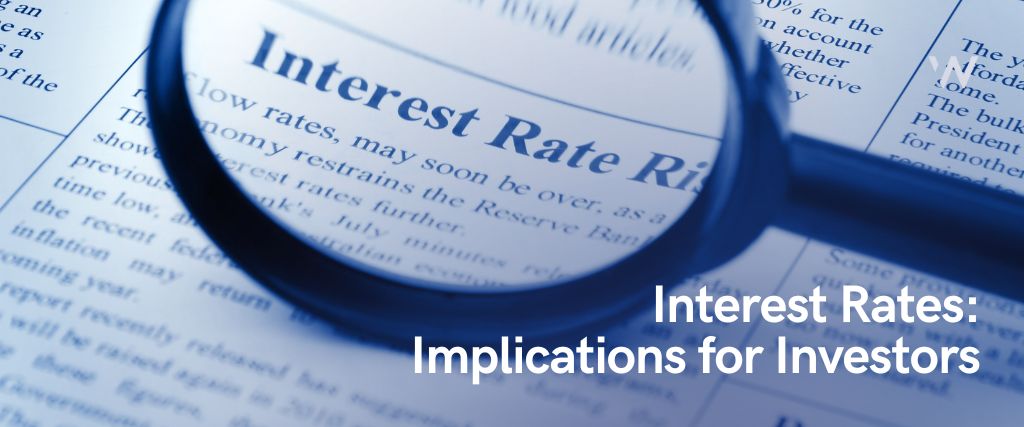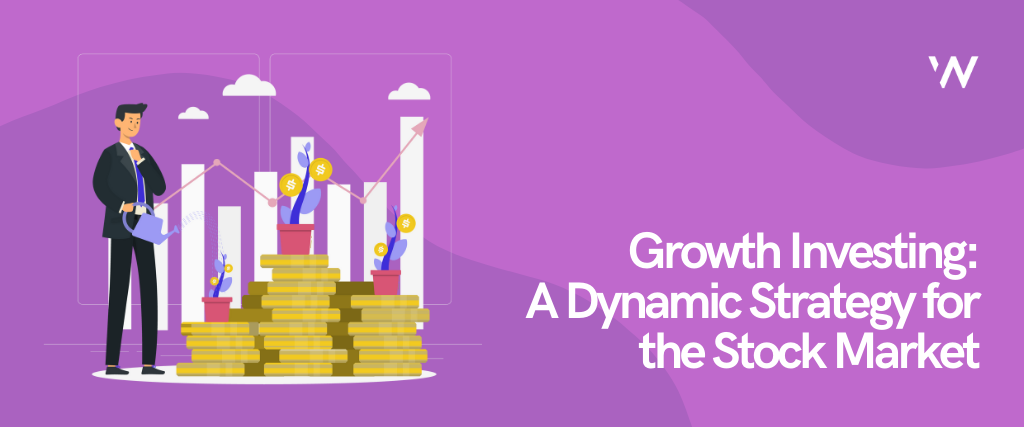An Introduction to Automated Investment Accounts: Risks, Rewards, and the Rise of Robo-Advisors
Often managed by robo-advisors, Automated Investment Accounts transform wealth management by harnessing technology to streamline the investing process. They offer a cost-effective and efficient method for investors to build and manage diversified portfolios tailored to their financial goals and risk tolerance. These platforms use complex algorithms to automate investing, minimizing human error and allowing for around-the-clock portfolio management. However, even the best robo-advisors have certain drawbacks, such as limited human interaction and inflexibility. Regardless, the rise of automated investment portfolios signals a significant shift in the industry, making the stock market more accessible and investments manageable for a wider audience.
In this article, we'll discuss creating an automated investing account, the core portfolios they utilize, account minimums, management fees, tax-loss harvesting, mutual funds, diversification, and everything you need to know about these new "digital advisors."

How Do Automated Investment Portfolios Work?
So, what is an automated investment account, and why would you trust your funds with a robot? At their core, automated investment portfolios, or robo portfolios, are digitally managed investments that leverage technology to automate the investment process. A computerized investing platform is typically managed by robo-advisors, a class of financial advisors that provide investment management services with minimal human intervention and tend to come with low annual fees compared to a human financial advisor.
Robo advisors operate by using complex algorithms to make investment decisions. First, investors complete an online survey to provide information about their investment goals, risk tolerance, and investment horizon. Based on this information, robo-advisors construct an investment portfolio from diversified assets (often including index funds and ETFs) to meet the individual's financial objectives. Depending on the investor's preferences and risk profile, these assets could range from bonds and stocks to real estate.
Once the portfolio is set up, robo-advisors continuously monitor market conditions and automatically readjust the assets within the portfolio to maintain the target asset allocation. This ensures the portfolio remains balanced and aligned with the investor's goals despite market fluctuations. Moreover, automated investing services often employ strategies such as tax-loss harvesting to optimize returns, further boosting the attractiveness of automated investment portfolios.

The Rise of Robo Advisors
The inception of automated investment portfolios can be traced back to the 2000s, coinciding with the advent of advances in technology and finance. As the financial landscape transitioned towards digitalization, the concept of robo-advisors emerged as a groundbreaking innovation that could cater to the growing need for simplified, accessible investing. Early adopters were primarily tech-savvy millennials, drawn to the convenience and accessibility offered by these robo-advisor platforms.
Fast forward to the present day, the popularity and adoption of automated investment portfolios have skyrocketed. As of 2020, robo-advisors manage billions of dollars in assets globally, demonstrating the significant shift toward automated investing. Several factors have contributed to this surge in popularity.
Firstly, the democratization of investing has played a pivotal role. Automated investment portfolios have made investing accessible to a broader demographic, eliminating the need for substantial capital typically required when engaging traditional financial advisors. This has attracted a new generation of investors who value simplicity, transparency, and affordability.
Additionally, the rise of fintech and AI has further propelled the growth of automated investment portfolios. Fintech companies have capitalized on technology to offer sophisticated, automated investment management services traditionally reserved for high-net-worth individuals. Integrating AI and machine learning algorithms enhances these services' precision, efficiency, and personalization, increasing their appeal to tech-savvy investors.

Lastly, the COVID-19 pandemic has accelerated the shift towards digital platforms, including investment platforms. The pandemic underscored the importance of digital solutions in ensuring uninterrupted financial services, prompting many to turn to automated investment portfolios.
Despite the rapid rise of automated investment portfolios, it's worth noting that their adoption varies across demographics and regions. Age, investment knowledge, and technological literacy influence the adoption rate. Nonetheless, the trend towards automation in investing is undeniable, reshaping the landscape of wealth management profoundly.
Growth Factors and Industry Trends for Automated Investment Portfolios
Various growth factors and trends drive the dynamics of the automated investing industry:
- Increasing Technological Adoption: The growing tech-savvy population and increasing internet penetration, especially in emerging markets, has led to increased adoption of robo-advisory services. The upcoming generation of investors is embracing fintech solutions, leading to the growth of automated investment portfolios.
- Shift Towards Passive Investment: There has been a distinct shift towards passive investment strategies, which track a market index or a specific basket of assets. Robo advisors fit well into this trend as they primarily deal with ETFs and index funds, further boosting the demand for automated investment portfolios.
- Regulatory Support: Regulatory bodies around the globe are showing support for robo-advisory services. This backing from regulatory bodies provides credibility and encourages more traditional investment institutions to explore and invest in robo-advisory platforms.
- Integration of AI and Machine Learning: Robo advisory platforms increasingly leverage artificial intelligence (AI) and machine learning (ML) to provide more personalized and accurate services. This technology-driven customization and risk assessment are driving more investors toward automated platforms.
- Demand for Low-Cost Investment Solutions: The cost-effectiveness of robo advisors compared to traditional financial advisors attracts cost-conscious investors. The lower management fees associated with robo advisors, coupled with the fact that most platforms do not require a minimum investment, will likely continue attracting more investors to automated investment portfolios.
The industry is likely to grow as more traditional financial institutions embrace automation and fintech companies continue to innovate in this space. The future for automated investment portfolios seems promising, driven by technological advancements, changing investor behavior, and a favorable regulatory environment.

The Benefits of Automated Investing
Cost-Effective Investing
Automated investment portfolios offer a cost-effective alternative to traditional investment management. Where conventional financial advisors often charge a significant percentage of assets under management, robo-advisors typically operate on a low-cost, flat advisory fee basis, which can be a fraction of the cost of a human advisor. Furthermore, most robo-advisors do not require a minimum investment, thereby removing a significant barrier to entry for new or less affluent investors. This cost-effectiveness also extends to the actual assets; robo advisors often utilize Exchange Traded Funds (ETFs) and index funds, which are known for their low expense ratios. The low management fees with this cost structure democratize access to investing, making it possible for a more extensive and diverse group of individuals to create an investment account to build and maintain a portfolio of investments at more approachable annual management fees.
Diversification and Risk-Management
Automated investment portfolios, managed by robo advisors, greatly simplify diversification, a critical strategy to mitigate investment risks. Robo advisors algorithmically construct portfolios that spread investments across various asset classes - such as stocks, bonds, commodities, and real estate - based on the investor's risk profile, investment goals, and time horizon. This diversification reduces the potential impact of any single investment performing poorly.
In addition to diversification, robo-advisors play a pivotal role in risk management. They employ advanced algorithms to optimize the risk-reward trade-off based on an investor's risk tolerance. For instance, for a risk-averse investor, the best robo-advisors may recommend a portfolio tilted towards investments in safer assets like government bonds. Conversely, for an aggressive investor, the portfolio may be skewed towards higher-risk, higher-return assets such as stocks. Furthermore, these portfolios are regularly rebalanced to maintain the desired level of risk exposure, ensuring the portfolio stays aligned with the investor's objectives.
Automated investment accounts take the complexity out of diversification and risk management, providing investors with a streamlined, efficient approach to managing their investments. This allows even novice investors to construct a well-diversified, risk-adjusted portfolio that aligns with their financial goals.

Efficiency and Convenience
One of the defining features of automated investment portfolios is their efficiency and convenience. Robo-advisors operate on digital platforms that are accessible 24/7, providing investors the freedom to manage their investments whenever and wherever they choose. This starkly contrasts traditional investment management, which often requires scheduled appointments and time-consuming meetings. In addition, automating complex tasks like portfolio rebalancing and tax-loss harvesting further enhances efficiency. When performed manually, these tasks can be time-intensive and require a high level of investment expertise.
However, robo-advisors handle these sophisticated processes automatically, ensuring your portfolio remains optimized without constant monitoring, sometimes including features like automatic portfolio rebalancing and tax-loss harvesting tools for a wide range of management fees. Furthermore, robo-advisors provide convenience through their user-friendly interfaces, catering to seasoned and new investors. With an intuitive design and easy-to-understand metrics, users can effortlessly track their investments, adjust their risk profiles, and monitor their portfolio's performance, making investing hassle-free.
Potential Drawbacks of Robo-Advisors
Lack of Human Interaction
So, what do you do if you have questions for your financial advisor? While the best robo-advisors provide efficiency and cost-effectiveness, they lack the personalized touch and emotional understanding that comes with human interaction. Traditional human financial advisors managing your investment accounts can offer a nuanced experience of an investor's circumstances, emotions, and long-term goals that may not be fully captured in the algorithms used by robo-advisors. They can also add value through face-to-face interactions, providing reassurance during volatile market conditions and offering complex financial planning services that may not be available through automated platforms.

Limitations in Customizability
Despite the algorithmic sophistication of robo-advisors, they may fall short in catering to the unique investment needs of every individual. Robo-advisors typically offer a set menu of portfolios based on risk tolerance, time horizon, and financial goals. However, they may not account for personal preferences and specific life events, such as planning for a child's education, investing in socially responsible funds, or managing inheritance. In such cases, the customizability offered by traditional advisors may provide a more tailored and suitable investment solution, albeit with a higher advisory fee.
In conclusion, while automated investment portfolios have merits, prospective investors should know these potential drawbacks. It's essential to comprehensively evaluate your investment needs, preferences, and comfort with technology before deciding the best approach to managing your investments.
Choosing the Right Automated Investment Portfolio for You
Understanding Your Financial Goals
Understanding your financial goals and risk tolerance is paramount when choosing an automated investment portfolio. Financial goals refer to the specific economic outcomes you wish to achieve, such as saving for retirement, buying a house, funding your child's education, or an additional income stream for some extra spending money. Your goals determine the investment strategy that a robo-advisor will adopt on your behalf. For example, suppose you have a long-term goal like retirement. In that case, the robo-advisor might recommend a more aggressive investment strategy emphasizing stocks for potentially higher returns. On the other hand, for a short-term goal like buying a car in the next few years, a conservative approach with a more significant allocation to bonds might be appropriate to preserve capital. It all comes down to the funds you have available to invest and your goals for making that money work for you.
Risk Tolerance
Risk tolerance is your ability and willingness to withstand losses in your investments. It's a function of your financial situation (how much risk you can afford) and your emotional comfort with risk (how much risk you're willing to take). Robo-advisors typically assess your risk tolerance through a questionnaire at the start of the advisory relationship and use this information to recommend a suitable portfolio. If you have a high-risk tolerance, you might end up with a portfolio with a significant proportion of high-risk, high-return assets like stocks. Conversely, the robo-advisor might recommend a portfolio with more bonds and other low-risk investments if your risk tolerance is low.
Understanding your financial goals and risk tolerance is crucial in selecting an automated investment portfolio that aligns with your unique needs and situation. This process ensures that your portfolio serves your objectives and it's comfortable for you to hold, even when markets fluctuate.

Comparing Fees and Features
When choosing an automated investment portfolio, comparing fees and features offered by different robo-advisors is critical. Regarding prices, it's essential to understand that low fees can significantly increase your returns over time due to compound interest. Therefore, comparing the management fees, trading fees, and any additional costs of various robo-advisors can provide a clearer picture of the total cost. Considering the minimum investment requirements is essential, as some robo-advisors may require a substantial initial deposit.
As for features, robo-advisors offer a wide range of services. Some provide tax-loss harvesting, a strategy that can help reduce your tax bill by systematically selling off losing investments. Others might offer automatic rebalancing, ensuring your portfolio stays aligned with your target asset allocation over time. Some robo-advisors also provide access to human advisors for personalized advice, which can be a valuable feature for investors who appreciate a more human touch in their financial planning.
Therefore, when choosing an automated investment portfolio, understand and compare the fees and features across different robo-advisors. This will allow you to make an informed decision about your investments that aligns with your financial goals, risk tolerance, and financial circumstances.

Key Takeaways
In conclusion, using automated investment portfolios or robo-advisors has irrefutably revolutionized the investment landscape by offering efficiency, cost-effectiveness, and ease of use. However, investors should be mindful of potential drawbacks, such as lack of human interaction and limited customizability. When considering an automated investment portfolio, it's crucial to understand one's financial goals and risk tolerance, as these factors determine the investment strategy that best suits your needs. Additionally, comparing annual fees and features of different robo-advisors ensures you select a service that aligns with your specific investment goals, risk tolerance, and financial circumstances while keeping the advisory fee down. Ultimately, choosing an automated investment portfolio requires a comprehensive evaluation of your investment needs, preferences, and comfort level with technology.
Our Solution
Automated Investment Portfolios are increasingly popular with investors, but feeling secure with many options can be challenging. First, the need for more human interaction can be discouraging for new investors who need more explanation from their financial advisors. Secondly, the lack of customization with a one-size-fits-all investing option isn’t appealing to others.
That’s where Wizest comes in. We’ve created a platform that allows investors to replicate Expert portfolios in one click and then connect with their team of Experts on a platform designed to feel as much like a social media app as an investing platform.
We had a vision to democratize the stock market and remove some barriers to entry that discourage novice investors. We understand the stock market can be intimidating and overwhelming and that most people’s lives are too busy to spend hours analyzing the market and making thoughtful investments.

Choose People, Not Stocks
Wizest lets you pick people instead of stocks. You can build your team of financial experts by browsing their Expert Profiles and Portfolios like you would on a social media platform. Building your team takes just minutes, replicating the portfolios of Experts with one click after you check out their profiles. It’s like fantasy football for investing, and you can shuffle your team of Experts anytime!
The Wizest Experts are curated to provide a variety of investing styles and risk levels for our users to choose from and are highly vetted by our leadership team. They regularly post updates to your news feed to explain their positions and investing style, adding to the human interaction lacking in the automated investment portfolios available to investors. Trades are then fully automated for users (with no extra transaction fees), so they can sit back and watch their money work without missing significant trades before it’s too late.
Wizest is designed to make investing simple for new traders, diversification easier for veteran investors, and the financial journey engaging and fun for everyone, regardless of experience level. Our simple subscription model makes it affordable for everyone (the cost of 1 coffee a week), no matter the size of your investment accounts, with no hidden fees.
Start investing today to take advantage of our special launch pricing!
<strong>The State of Interest Rates in the United ...
2023-09-19
Interest rates play an integral role in the financial sphere, so it's essential for investors to und...
Read moreAn Introduction to S&P 500 (Standard & Poo...
2023-09-28
Take a deep dive into the strategy of investing in the S&P 500. Explore the basics and the reasons t...
Read moreGrowth Investing - A Dynamic Strategy for the Stoc...
2023-10-17
The fundamental concept of growth investing is finding companies that will to increase in value, pro...
Read more


